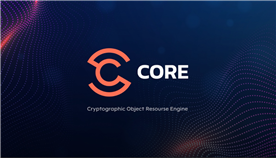Blockchain technology is a decentralized and distributed digital ledger. A blockchain can run independently and is maintained by its supporting community. This enables a trustworthy peer-2-peer transactional platform without the need for 3rd parties to facilitate transactions.
However, this technology is still in its infancy. Like any technology in the same stage of existence, blockchain technology still has a few limitations that need to be addressed before reaching its full potential.
What are some of the main issues of blockchain technology?
The main issues with blockchain technology are its scalability, throughput, and interoperability. This is referred to as the blockchain trilemma within the blockchain and cryptocurrency community. Scalability is pretty self-explanatory and refers to the ability of blockchains to scale in size.
Throughput and scalability go hand-in-hand to a certain degree, as throughput refers to a blockchain’s ability to process transactions, generally expressed as several transactions over a specified period. Throughput can also influence a blockchain’s scalability as a low throughput will restrict how many transactions a blockchain can process and hence how much a blockchain can scale. Another issue is the interoperability of blockchains.
This refers to the ability of the various blockchains in existence to communicate with each other in a secure channel without the need for 3rd party communication facilitators. Presently, blockchains are unable to communicate with each other in a true cross-chain fashion.
Interoperability ensures decentralization
Looking at the current limitations of blockchain technology, interoperability can be considered crucial if we want to live in a genuinely decentralized world. Without interoperability, we may end up with a blockchain future where one blockchain project, like Ethereum, monopolizes the market. Although the technology itself may be decentralized, one project dominating the market is not.
Conclusion
With all of the blockchain projects currently in existence, it would only make sense that we would look for a way to connect them all to utilize the different capabilities of all of the available blockchains for their benefit. This will allow us to live in a genuinely decentralized world and enable the Multichain movement to thrive.
How CORE solves this
CORE addresses the interoperability issue of current blockchain technology primarily by implementing ZK-Snarks, Peg Zones, and cross-chain bridges to deliver a true cross-chain communication protocol.
For blockchains to communicate with each other, a bridge needs to exist between the two entities for a bilateral data transmission to occur. This is where Peg Zones come in. Peg Zones are blockchains that track the state of other blockchains to establish finality for the probabilistic blockchain it bridges so that it can be compatible with the Inter-Blockchain Communication Protocol. In parallel to Peg Zones are light nodes. Instead of storing every transaction on a blockchain, light nodes store subsets of the blockchain data and rely on the Peg Zones to relay the entire histories of the connected blockchains to them. Any blockchain that supports light nodes can connect to the bridge to allow for an inter-connected blockchain protocol.
However, storing all of the data from all of these blockchains is memory intensive. To allow for the scalability of an interconnected blockchain protocol, the data required needs to be optimized. To achieve this, CORE uses ZK-Snarks, a protocol that achieves zero-knowledge, succinctness, soundness, and completeness within the CORE ecosystem. The CORE team identified ZK-Snarks as a viable cross-chain data optimization protocol because it requires less information to validate transactions on the blockchain without sacrificing security and data validity.
Website: https://www.coremultichain.com/
Contact Details:
LBK Blockchain Co. Limited
LBank Exchange
[email protected]
Source: Read Full Article
